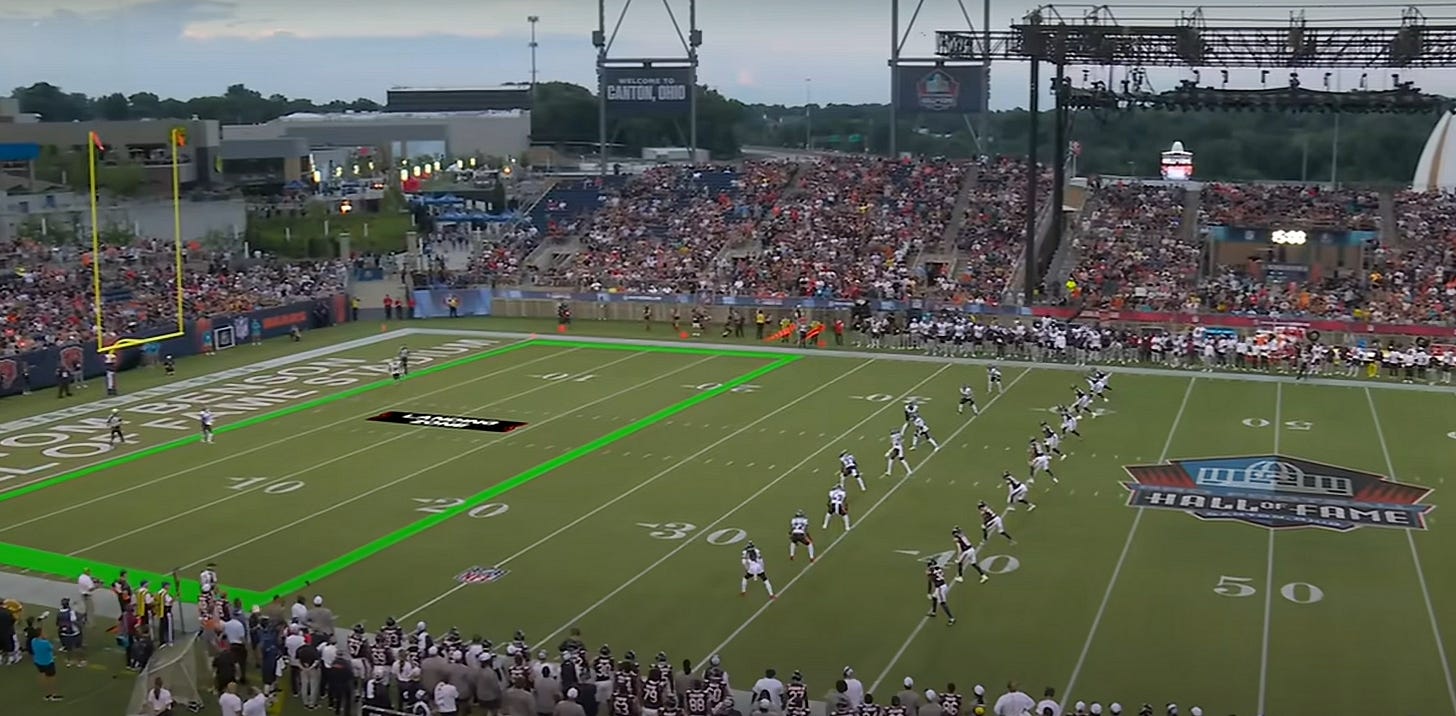
East Rutherford, N.J. — One of the most exciting components of Thursday’s preseason opener between the New York Giants and Detroit Lions is getting an early look at the NFL’s revamped, “dynamic” kickoff.
The play was overhauled this offseason, borrowing heavily from a version previously used in the XFL. The league’s aim is to safely encourage more kick returns as the former setup was becoming increasingly useless.
Here are the basics of the new design:
The setup
The ball will continue to be kicked from a team’s 35-yard line (or the 20-yard line following a safety). The remaining 10 players on the kicking team will line up on the opposing 40.
The majority of the receiving team, nine players total, will initially line up in a 5-yard area between the 30- and 35-yard lines. This is known as the setup zone. A minimum of seven players must have one foot on the 35-yard line —also known as the restraining line — when the ball is kicked. The remaining two from that group of nine must line up outside the hash marks.
The final two players from the receiving team are the returners. They operate in the “landing zone,” which is between the goal line and the 20-yard line.
The zones do not change with penalties, only where the ball is kicked.
The mechanics
Only the kicker and two returners can move before and immediately after the ball is kicked. The 10 coverage players and nine blockers in the setup zone are prohibited from moving until the ball has either hit the ground or been fielded by a returner.
The movement rules for that group aren’t as strict as they are for offensive players before a regular snap. They can move their head to locate the ball and arms to signal their teammates. Officials have been trained to focus on players’ feet for early, illegal movement.
After the kick, the kicker is not permitted to cross midfield until the ball bounces or is fielded by a returner.
All kicks must make it to at least the 20-yard line. Any kick that bounces before the 20, or strikes a player in the setup zone, is blown dead and treated as out of bounds, starting the offense at the 40-yard line.
Players in the setup zone are allowed to try and deflect a low kick, as long as their feet remain on the ground.
Additional changes
● Fair catches are no longer permitted and there are two types of touchbacks. A touchback on a kick that reaches the end zone on the fly comes out to the 30-yard line. But if a kick hits inside the landing zone before the goal line and bounces into the end zone, the touchback only comes out to the 20-yard line.
All balls that hit inside the landing zone and remain in the field of play are live and must be physically downed by the returner to register the touchback.
● Onside kicks are the biggest loser with these changes. The new alignments eliminate surprise onside attempts. Those kicks are now permitted only in the fourth quarter, when a team is trailing, and the attempt must be declared before the attempt. The formation rules for onside kicks remains unchanged.
● If weather conditions are causing the ball to fall off the tee, the kicking team may use a 12th man as a holder. That player must immediately leave the field once the ball is kicked.





Welp, the last viable onside kick in the NFL proved to be the one the lions could not convert in the NFC championship game.
Thanks Justin. Best explanation so far. Now I have a better understanding of the kick offs.